Taking care of a hamster may seem overwhelming at first, but with the right training tips, it can become a rewarding experience. Hamsters are funny, cute, and relatively easy to care for, making them a popular choice for first-time pet owners. In this article, I will provide essential training tips for new hamster owners to ensure a happy and well-behaved pet.
Key Takeaways:
- Training is important for a well-behaved hamster.
- Hamsters can be easily cared for by following these tips.
- Consistent handling helps hamsters become comfortable with human interaction.
- Signs of a happy hamster include a healthy appetite and regular grooming.
- Responsible hamster care involves providing a suitable habitat and following a balanced diet.
Is it easy to take care of a hamster?
Taking care of a hamster can be a rewarding experience, especially for first-time pet owners. Compared to larger pets like dogs, hamsters are relatively easy to take care of. Daily care involves essential tasks such as feeding, changing their water, and handling them with care.
Bonding with your hamster through regular handling is crucial for their well-being and building a trusting relationship. It helps them become comfortable and used to human interaction.
Hamsters are curious and active creatures that require mental and physical stimulation. Spending time with them each day not only ensures their well-being but also promotes a strong bond between you and your furry friend.
Furthermore, their small size and simple dietary requirements make it easier to provide them with what they need. Let’s explore the daily care tasks involved in providing a comfortable and loving home for your hamster:
Daily Feeding
Feeding your hamster a balanced diet is essential for their overall health. Opt for high-quality commercial hamster food that provides the necessary nutrients. Look for brands like Oxbow and Kaytee, which offer specially formulated pellets or blocks with a protein content of around 16%.
Supplement their diet with small portions of fresh fruits and vegetables, but be sure to introduce new foods gradually to avoid upsetting their delicate digestive system. It’s also crucial to monitor portion sizes, as hamsters have small stomachs and overfeeding can lead to weight issues.
Daily Handling
Handling your hamster daily is essential for their socialization and overall well-being. It helps them become comfortable being touched, held, and interacted with by their human companions.
When handling your hamster, make sure to approach them with gentle and steady movements. Hold them close to your body with two hands and avoid sudden movements that may startle them. Remember to create a calm and quiet environment to reduce any unnecessary stress.
Regular handling can also help you detect any changes in your hamster’s behavior or health, allowing you to take immediate action if needed.
Do hamsters like to be held?
Hamsters can become comfortable with being held if started early in life and consistently handled. They rely on their sense of smell, so talking to them and standing near their cage can help familiarize them with your presence. Frequent handling is essential to ensure that they remain tame and don’t become aggressive.
Building a strong bond with your hamster through regular handling is beneficial for both you and your pet. It allows them to become accustomed to human interaction and helps establish trust. By handling your hamster frequently, you can also monitor their health and detect any potential issues at an early stage.
When holding your hamster, it’s important to create a calm and quiet environment to minimize stress. Use gentle and steady movements, supporting their body with both hands. Avoid sudden movements or squeezing, as it can startle or hurt your hamster. Additionally, it’s best to hold them close to the ground or provide a secure surface to avoid any accidental falls.
Remember, each hamster has a unique personality, and some may take longer to get used to being held. Patience and consistent training are key to ensuring a positive and enjoyable experience for both you and your pet.
How do I tell if my hamster is happy?
Understanding a hamster’s mood can be challenging, but there are certain signs that indicate a happy and contented pet. By observing their behavior and habits, you can decipher whether your hamster is experiencing joy in their environment. Here are some key indicators to look out for:
- Healthy Appetite: A hamster with a healthy appetite is typically a happy one. If your pet is eagerly eating their food and showing interest in treats, it is a positive sign.
- Regular Grooming: Hamsters are known for their meticulous grooming habits. If your hamster spends time cleaning themselves, it shows that they are comfortable and content in their surroundings.
- Consistent Playtime and Sleep Schedule: Hamsters thrive on routine, so having a regular playtime and sleep schedule indicates that they feel secure and safe in their habitat.
A genuinely happy hamster will also exhibit an eagerness to interact with humans. They’ll approach you with curiosity and seek attention, showcasing their comfort level in your presence. By paying attention to these signs, you can ensure the well-being of your furry friend and create a harmonious bond.
Do’s and don’ts with hamsters
When it comes to responsible hamster care, there are certain do’s and don’ts that every hamster owner should keep in mind. By following these recommendations, you can ensure the well-being and happiness of your furry friend.
Do: Consider getting a hand-raised hamster
If possible, opt for a hand-raised hamster. Hand-raised hamsters are more likely to be well-socialized and less prone to aggression. By choosing a hand-raised hamster, you can start with a pet that is already comfortable around humans.
Do: Provide regular attention and playtime
Hamsters are social creatures and need regular interaction with their owners. Avoid leaving your hamster unattended for long periods of time and make sure to spend quality time with them every day. This will help to create a strong bond and ensure their happiness.
Do: Clean the cage regularly
Cleaning the hamster cage is important for maintaining a clean and healthy environment for your pet. Use pet-safe cleaning products and remove any soiled bedding, food remnants, or waste on a regular basis. This will help prevent the spread of bacteria and keep your hamster healthy.
Do: Choose safe toys for mental stimulation
Providing your hamster with a variety of safe toys is essential for their mental well-being. Toys such as tunnels, chew toys, and puzzle toys can provide stimulation and prevent boredom. Make sure to choose toys that are specifically designed for hamsters and free from any small parts that could be a choking hazard.
Do: Establish a strict feeding schedule
Establishing a strict feeding schedule is important for your hamster’s health. Provide a balanced diet of commercial hamster pellets or blocks that contain the necessary nutrients. Avoid overfeeding your hamster with treats, as this can lead to obesity and other health issues.
Don’t: Neglect their hygiene
Hamsters are clean animals and require regular grooming. Ensure that your hamster has access to a dust bath, which helps keep their fur clean and prevents oil buildup. Regularly trim their nails to avoid overgrowth and discomfort.
Don’t: Use unsafe bedding materials
When choosing bedding for your hamster’s cage, opt for safe and suitable options such as Carefresh or grass hay. Avoid using cedar or pine shavings, as they can be harmful to hamsters’ respiratory systems.
By following these do’s and don’ts, you can ensure responsible hamster care and provide your pet with a safe and happy environment to thrive in.
Hamster housing and enrichment
A proper hamster habitat is crucial for the overall well-being of your furry friend. Providing the right cage size, suitable bedding, and enrichment toys is essential to ensure a happy and healthy hamster.
Choosing the right cage size
When selecting a cage for your hamster, it’s important to consider their habitat needs. A cage with a minimum floor space of 15-20 gallons is recommended to ensure your hamster has enough room to move around and explore. A larger cage allows for more natural behavior and provides opportunities for exercise and play.
Using suitable bedding materials
The bedding you choose for your hamster’s cage is important for their comfort and hygiene. Opt for suitable bedding materials like Carefresh or grass hay. These materials help absorb moisture and odors, keeping the habitat clean and fresh. Avoid using cedar or pine shavings as they can be harmful to your hamster’s respiratory system.
Providing enrichment toys
Hamsters are active animals that need mental stimulation and physical exercise. Enrichment toys play a vital role in keeping your hamster entertained and engaged. Provide a variety of toys that allow for chewing, climbing, and burrowing, such as tunnels, chew sticks, and hiding spots. A solid exercise wheel is also essential to provide your hamster with an outlet for their energy.
In conclusion, ensuring a suitable hamster habitat with the right cage size, suitable bedding, and enrichment toys is crucial for your hamster’s well-being. Providing them with a comfortable and stimulating environment will contribute to their overall happiness and health.
Hamster Diet and Medical Needs
Proper nutrition and veterinary care are essential for the health and well-being of your hamster. In this section, I will discuss the importance of hamster nutrition, recommended commercial diets, and the common illnesses that hamsters are prone to.
Hamster Nutrition
Feeding your hamster a balanced diet is crucial for their overall health and longevity. Their diet should consist mainly of commercial pellets or blocks specifically formulated for hamsters. These pellets or blocks should contain around 16% protein, ensuring that your hamster receives the necessary nutrients for growth and development.
It is also important to supplement their diet with fresh fruits and vegetables. These can include small portions of apples, carrots, broccoli, and leafy greens. However, it is crucial to be mindful of portion sizes and avoid overfeeding, as obesity can lead to health problems for your hamster.
Image:
Recommended Commercial Diets
When choosing a commercial diet for your hamster, it is important to opt for reputable brands that prioritize the nutritional needs of hamsters. Two recommended brands are Oxbow and Kaytee, which offer high-quality hamster pellets or blocks that are specifically formulated to meet their dietary requirements.
These brands have established a reputation for their commitment to providing well-balanced and nutritious food options for small pets, including hamsters.
Veterinary Care
Regular veterinary care is crucial for maintaining your hamster’s health. It is recommended to schedule routine check-ups with an experienced exotic pet veterinarian who can provide specialized care for small animals, including hamsters.
Veterinary visits allow for early detection of any health issues, prevention of diseases, and guidance on proper care and nutrition. Your veterinarian can also advise you on additional supplements or dietary changes that may be necessary for your hamster’s specific needs.
Common Hamster Illnesses
Hamsters are prone to various illnesses, and early detection is key to effective treatment. Here are some common hamster ailments:
| Illness | Symptoms | Treatment |
|---|---|---|
| Respiratory Issues | Sneezing, wheezing, labored breathing | Antibiotics prescribed by a veterinarian |
| Dental Diseases | Loss of appetite, difficulty chewing, overgrown teeth | Trimming of teeth under anesthesia, diet modification |
| Skin Wounds | Cuts, scratches, or sores | Clean the wound, apply antiseptic, monitor for infection |
It is important to note that these are just a few examples of common hamster illnesses. If you notice any changes in your hamster’s behavior or appearance, it is recommended to consult with a veterinarian for an accurate diagnosis and appropriate treatment.
Providing your hamster with a balanced diet and regular veterinary care will help ensure their overall health and well-being. By staying proactive and attentive to their nutritional and medical needs, you will be able to enjoy the companionship of a happy and healthy hamster.
Conclusion
Taking care of a hamster requires responsibility and commitment. By following the training tips provided in this article, you can ensure the well-being of your hamster and create a rewarding bond with your pet.
Remember to prioritize their nutritional needs by providing a balanced diet of commercial pellets or blocks along with fresh fruits and vegetables. Additionally, ensure that your hamster has a suitable habitat with enough space, proper bedding, and a variety of enrichment toys for mental stimulation.
It is crucial to stay vigilant about your hamster’s health and schedule regular veterinary check-ups. Hamsters are prone to various illnesses, so early detection and treatment are important for their well-being.
As a responsible pet owner, it is your duty to provide responsible hamster care and meet their needs. With proper training, a suitable environment, and regular care, you can enjoy the joys of having a happy, healthy, and well-trained furry friend.
FAQ
What are some essential training tips for new hamster owners?
New hamster owners can start by bonding with their pets through regular handling. Talking to them and standing near their cage can help familiarize them with your presence. Frequent handling is important to ensure they remain tame and don’t become aggressive.
Is it easy to take care of a hamster?
Taking care of a hamster is generally easier compared to larger pets. Daily care involves tasks such as feeding, changing water, and handling. With the right training tips and commitment, hamsters can be funny, cute, and relatively easy to care for.
Do hamsters like to be held?
Hamsters can become comfortable with being held if started early in life and consistently handled. They rely on their sense of smell, so handling and regular interaction with humans are important to make them comfortable.
How can I tell if my hamster is happy?
Signs of a happy and contented hamster include a healthy appetite, regular grooming, and consistent playtime and sleep schedule. A hamster that is comfortable with you will eagerly approach humans and seek attention, showing that they are happy in their environment.
What are some do’s and don’ts with hamsters?
Some do’s and don’ts for responsible hamster care include getting a hand-raised animal to prevent aggression, not leaving the hamster unattended for long periods, cleaning the cage regularly with pet-safe products, and providing a variety of safe toys for mental stimulation. It is also important to establish a strict feeding schedule and avoid overfeeding with treats.
What should I consider for hamster housing and enrichment?
A proper hamster habitat is essential for their well-being. The cage should provide sufficient space, suitable bedding materials like Carefresh or grass hay, and be well-ventilated. Hamsters need toys for chewing, climbing, and burrowing, so a variety of options and a solid exercise wheel should be provided for their entertainment.
What should I feed my hamster and what are their medical needs?
Hamsters should be fed a balanced diet of commercial pellets or blocks containing around 16% protein. Recommended brands include Oxbow and Kaytee. Supplement their diet with fresh fruits and vegetables, and be mindful of portion sizes. Regular veterinary visits are crucial for maintaining a hamster’s health, as they are prone to various illnesses such as respiratory issues, dental diseases, and skin wounds.
How can I ensure responsible hamster care?
Responsible hamster care includes following specific do’s and don’ts, prioritizing their nutritional needs, providing suitable habitat and enrichment, and staying vigilant about their health. By following these guidelines, you can ensure the well-being of your hamster and create a rewarding bond with your pet.

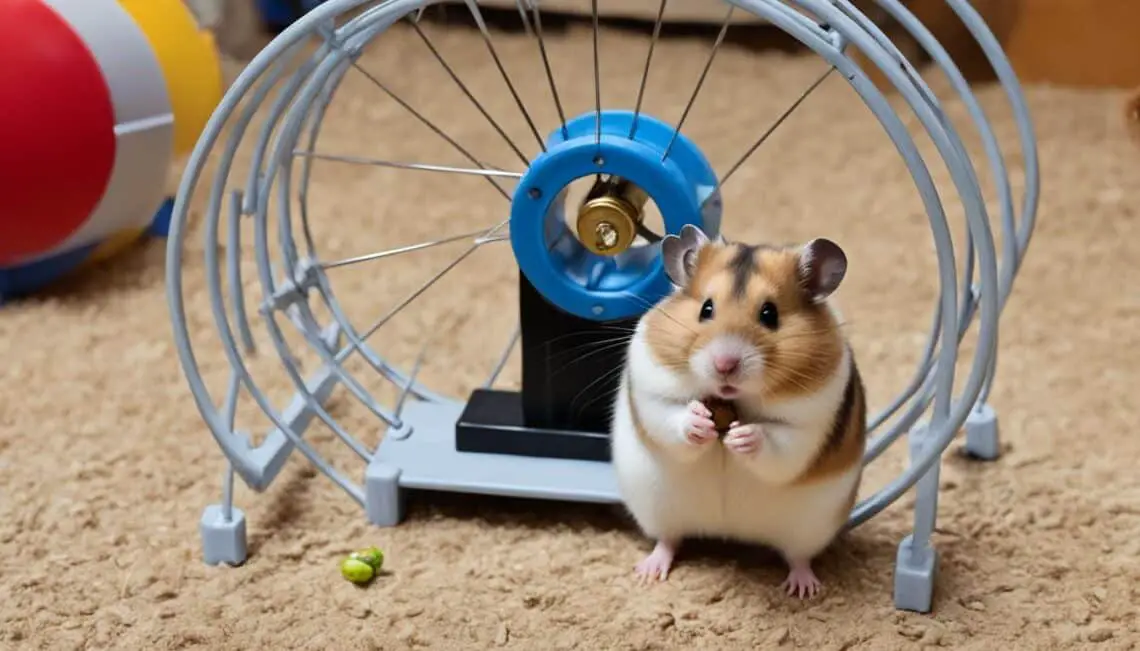
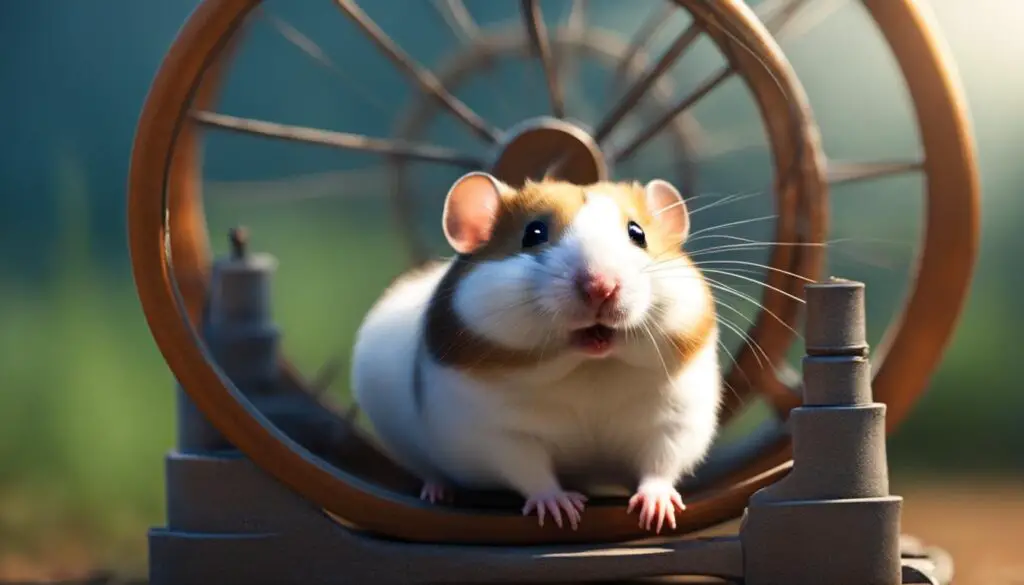
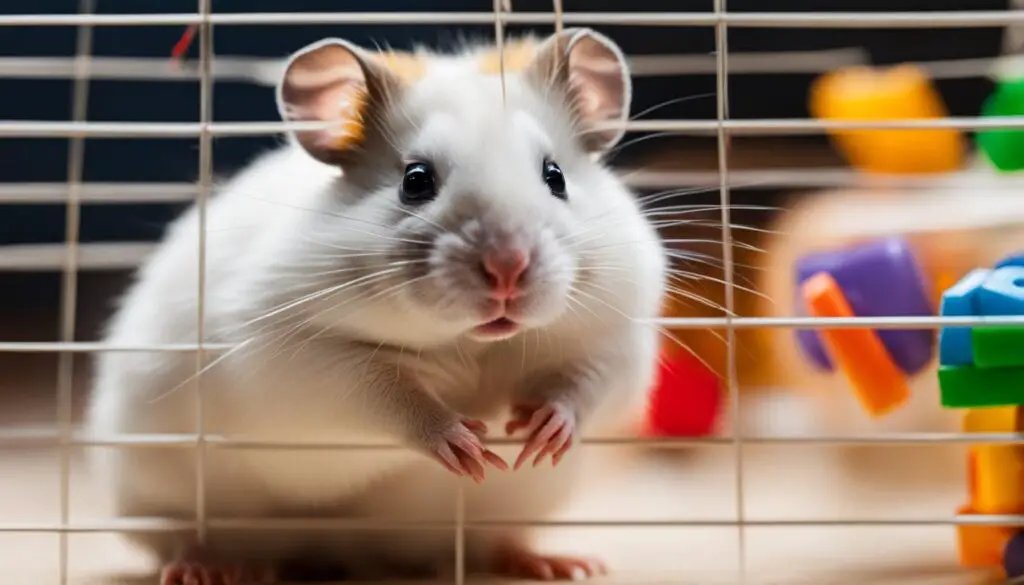
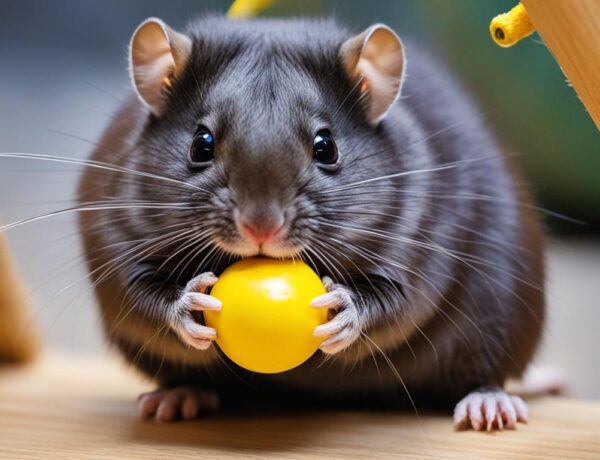
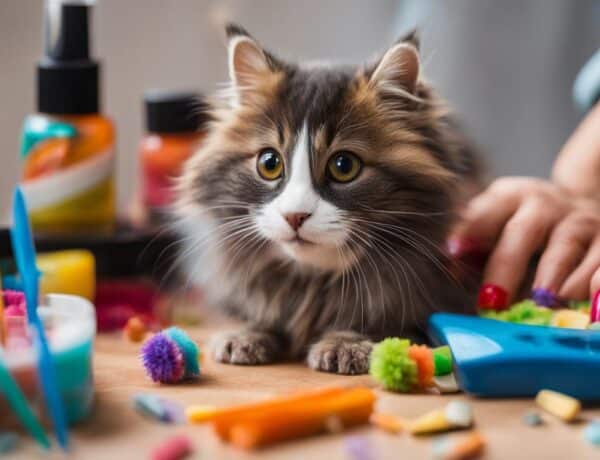

No Comments